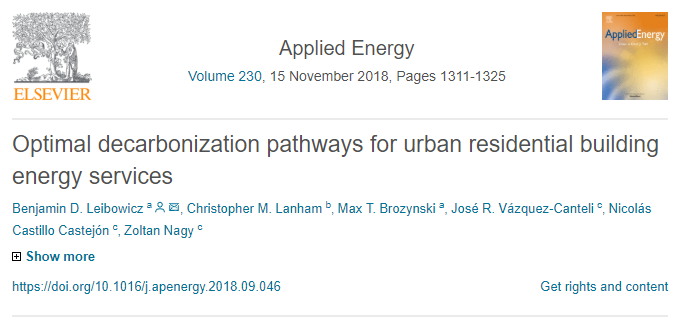A new study using OSeMOSYS on least-cost decarbonization pathways for the residential sector

Based on a modified version of the OSeMOSYS code translated in GAMS
The new article by Leibowicz et al . presents an innovative modelling framework to determine the least-cost decarbonization pathway for residential building energy services. The framework described in the paper is based on a modified version of the OSeMOSYS code translated in GAMS, where the residential building end-use technologies are separated from the dispatch technology representing the electricity supply side of the energy system. The authors also added endogenous constraints to the penetration rate of the technologies to model in a more realistic way the adoption of new end-use technologies. Finally, an hourly demand profile for characteristics days in each season along the year has been used as input for a detailed time representation of the electricity demand of households energy services, calculated out of a set of tools (i.e. CitySim, NREL System Advisor Model) and empirical data. Results show that the most cost-effective solution to decarbonize energy services for the urban residential sector is to electrify the end use technologies as well as the supply side of the system (i.e. increasing the share of variable renewable sources in the generation mix).

